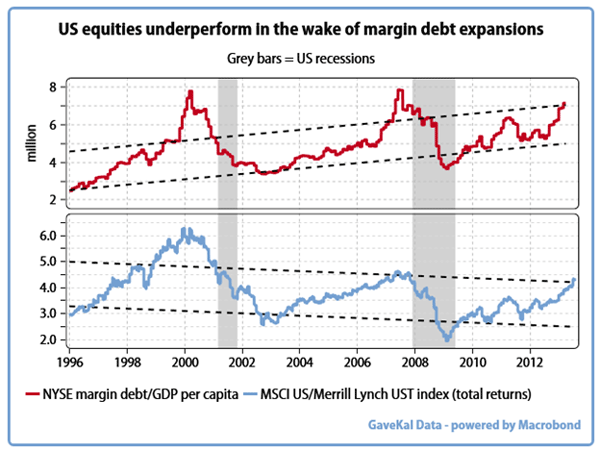No Sign Of Market Bubble Says Major BrokerDealer
Post on: 16 Март, 2015 No Comment

With the S&P 500 pressing on to all-time highs, is the stock market too good to be true? Are we shudder approaching a bubble?
One way to gauge the risk is to look at the number of S&P 500 industries with nosebleed price-earnings ratios when the market bubble burst in March 2000. A P-E ratio of 30 or higher is often looked at as unsustainably high for most companies.
Many investors think the market is overly expensive because they hear about it hitting a new high, said Jeff Kleintop, chief market strategist for LPL Financial, the nation’s fourth largest broker-dealer and largest independent broker-dealer. And there are some (recent) highflying names like Amazon (AMZN ), Netflix (NFLX ) and Tesla Motors (TSLA ). Biotech was hot too. But there just aren’t that many bubbly industries.
As the bubble was bursting 14 years ago, 16 of the S&P 500’s 62 industries had P-E ratios topping 30. That accounted for 70% of S&P 500 companies’ total market value.
Of course, the market doesn’t need to be in a bubble the size of 2000’s to portend a big sell-off, but the absence of a bubble reduces the risk of a market blowoff.
Just four industries had P-Es over 30 as of March 28, 2014. They accounted for less than 4% of the benchmark’s market value.
The four hot-and-sweaty segments this time are health care technology, REITs, Internet and catalog retail, and construction materials.
Below the 30 P-E bubble threshold, industrials are a segment whose prospects Kleintop likes.
Those are companies that create capital goods used by other businesses, he said. I like the segment because business spending is rising. Many names in that space and other nonfrothy industries are badly beaten down due to anemic spending last year.
General Electric (GE ) is one likely beneficiary, Kleintop says. Transportation and railroad equipment has been in high demand, he said.
Illinois Tool Works (ITW ) should benefit from the manufacturing renaissance, he says. They make goods used to expand or revamp factories.
Tech hardware is a second segment that should gain from increased capital goods spending. Business hiring in general is climbing. That should boost hardware and services revenues for IBM (IBM ), Kleintop says.
Regional banks are a third segment Kleintop likes. PNC (PNC ) and Wells Fargo (WFC ) stand to gain from more borrowing as the economy warms. Also, rising rates make lending more profitable. PNC has IBD’s Composite Rating of 91.
In the consumer discretionary segment, some brick-and-mortar retailers are positioned to benefit from rising consumer spending because their valuations are low and their fundamentals are promising.
That might benefit retailers like Macy’s (M ), PetSmart (PETM ) and a more discount-oriented retailer like Kohl’s (KSS ), Kleintop said.














